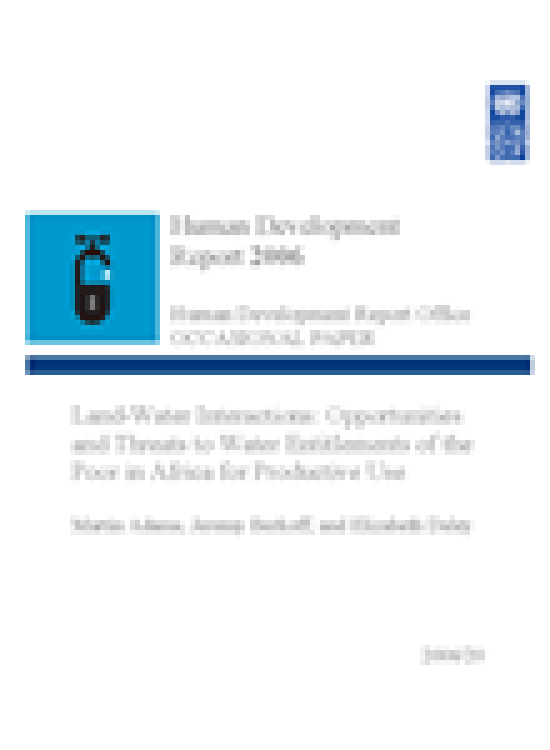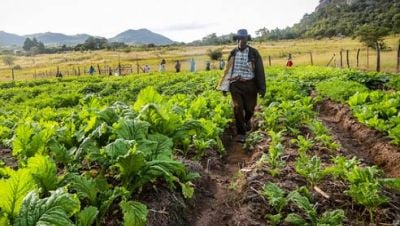Land-Water Interactions
Opportunities and Threats to Water Entitlements of the Poor in Africa for Productive Use

Download Report by Language
Document
adamsmartinetal.pdf
(334.94 KB)
Citation
Adams, Martin, Berkoff, Jeremy, Daley, Elizabeth. 2006. Land-Water Interactions: Opportunities and Threats to Water Entitlements of the Poor in Africa for Productive Use. New York.
Land-Water Interactions
Opportunities and Threats to Water Entitlements of the Poor in Africa for Productive Use
Posted on: January 01, 2006
Rising population, economic development and resource depletion, including climate change, threaten access by the poor to water for direct consumption and for productive use. Drawing on examples from across the African continent, this paper examines the effects of development interventions that have separated and conflated the land and water rights of poor producers. Negative outcomes have resulted from the failure of governments and donors to appreciate the vulnerability of poor people to the loss of their water entitlements, arising from sheer neglect, the dysfunctional design of development interventions and the privatisation of group-based property rights by the powerful. The African land mass is about 30 million square kilometres, of which 7 million (23 percent) are arid, 13 million (43 percent) are semi-arid, and 10 million (34 percent) are sub humid or humid. The main focus of this paper is on land-water interactions in the two thirds of Africa comprising the arid and semi-arid areas, where, for much of the year and in the absence of adequate rainfall, crop and livestock production are possible only with the aid of lifting and hydraulic structures (wells, pumps, reservoirs, dams, diversion weirs etc.) or with the carefully managed use of available natural water sources (streams, rivers, ponds, pans etc.). Two broad production systems are thus considered: irrigated agriculture for crop and livestock production, and pastoralist systems (extensive livestock production).

